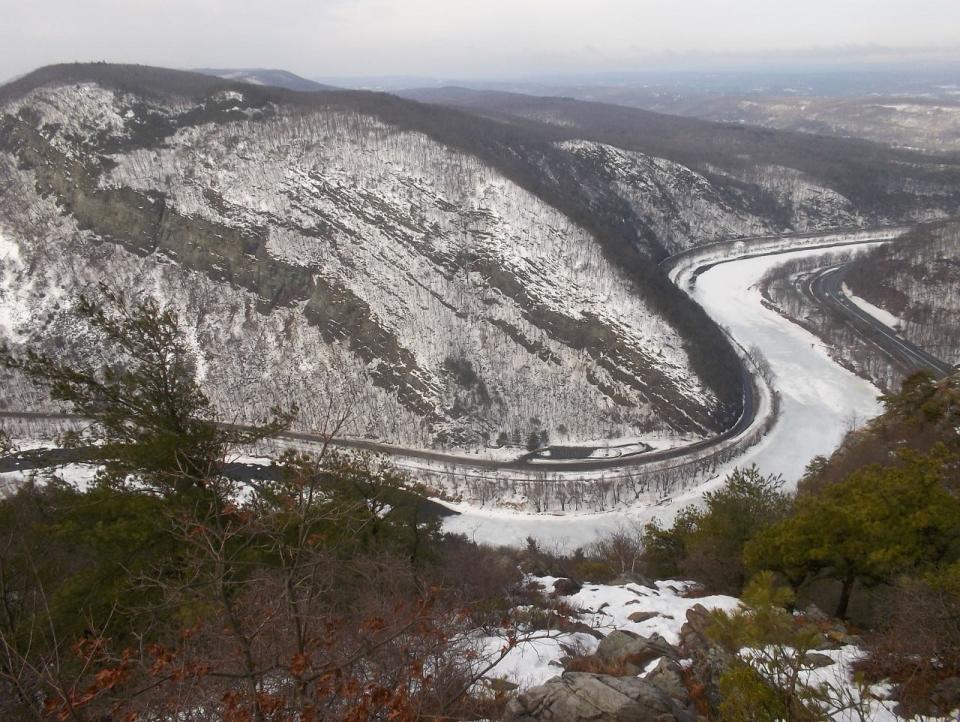Opinion: Cartwright, Wild, Fetterman can help protect future of national parks
- Oops!Something went wrong.Please try again later.
- Oops!Something went wrong.Please try again later.
Little was said in Pennsylvania's recent campaigns for the United States Congress regarding the environmental protection of our treasured national parks and wildlife refuges.
Even candidates for national office sometimes take for granted that these wondrous places will always be there, that they provide a multitude of opportunities for recreation, education, and cultural reflection. As for the general public, it might not have enough knowledge to fully appreciate how climate change is affecting parks and refuges.
This is where Representatives Susan Wild and Matt Cartwright, and Senator John Fetterman come in. Their victories can boost them onto the national stage where they can play leading roles to protect national parks and refuges.
Wild is co-chair of a climate change task force and Cartwright sits on the subcommittee on Interior and the Environment and is a member of the National Parks Caucus.

Fetterman can jump start his tenure by setting parks and refuges as priorities for his first year in office. Now in his third term, Senator Bob Casey can wield great clout to protect parks and refuges. They can begin by advocating for the 19 national park sites and four national wildlife refuges located in Pennsylvania.
They can show the public that the viability of these public lands depends on a protected and healthy environment.
These legislators could launch their initiative by showcasing two jewels of northeastern Pennsylvania: The Delaware Water Gap National Recreation Area and Cherry Valley National Wildlife Refuge.
With 4.5 million visitors annually, Delaware Water Gap is a popular national park site.
It is a haven for water sports, fishing, and hiking. It is also a powerful economic engine for the region, generating jobs and income for thousands.
Cherry Valley, which includes 20,000 acres in Monroe and Northampton counties, is one of the newer national wildlife refuges, established in 2008. According to the US Fish & Wildlife Service, it is "a diverse mosaic of wetland and upland habitats that support... five federally listed threatened or endangered species."
But, the question looms: "What might happen to Delaware Water Gap and Cherry Valley in the future if climate change remains unabated?"

More from John Ploski:National Recreation areas boost northeastern Pennsylvania economy | My Turn
Related:Warming Delaware River could threaten trout. What it means for anglers and tourists
Noted climate scientist Patrick Gonzalez in his 2016 study on climate impacts at Delaware Water Gap gets us closer to answering this challenging question. His conclusion is that "...continued climate change could increase the vulnerability of species, ecosystems, and physical, cultural and infrastructure resources."
The environmental outlook is just as worrisome for nearby Cherry Valley. The Fish & Wildlife Service recently released a report prepared by the national Audubon Society that addresses specifically the projected conditions there. The study finds that without action to mitigate a warming planet, "...changes in climate and vegetation will alter plant and insect communities, influence availability of food, water, and shelter for birds; and will likely cause ecological disruption."
To combat the effects of a changing climate on its lands, the National Park Service has prepared a strategic plan. The plan will employ an approach that considers multiple scenarios to evaluate how best to address various threats. Critical to the strategy's implementation will be a concerted outreach to those who live near parks.
The Fish & Wildlife Service is also ready to reach out to neighbors of refuges. In its Climate Change Strategic Plan, the agency states it will "create a broad-scale awareness of the urgent nature of the effects of accelerating climate change on fish and wildlife habitats; and will engage others in being part of the solution..."
Wild, Cartwright, Fetterman and Casey can refer to these plans when they call on the park and wildlife services to hold public informational sessions in communities near parks, recreation areas, and refuges. Heading the queue for the meetings could be towns in northeastern Pennsylvania that adjoin Delaware Water Gap and Cherry Valley.
These gatherings would detail the agencies' climate change strategies and give attendees an opportunity to contribute to future planning.
In the meantime, individuals should contact Senators Casey and Fetterman and Representatives Wild and Cartwright and urge them to step up now to safeguard America's national parks, recreation areas, and wildlife refuges, starting right here in the Keystone State.
John Plonski is a volunteer for national parks and was formerly Executive Deputy Secretary of Pennsylvania's state parks and forests.
This article originally appeared on Pocono Record: Fetterman should join others in protecting national parks, refuges

